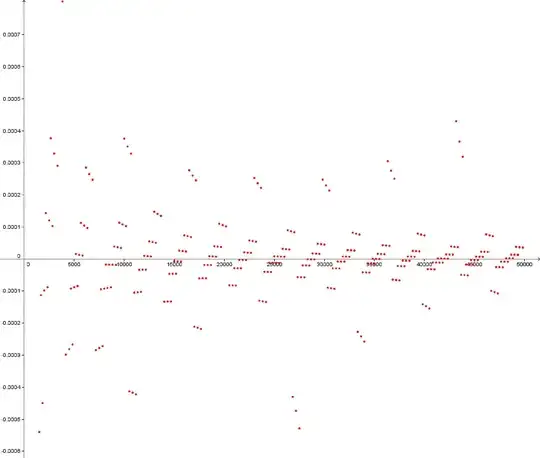Can be easily proved that the following series onverges/diverges?
$$\sum_{k=1}^{\infty} \frac{\tan(k)}{k}$$
I'd really appreciate your support on this problem. I'm looking for some easy proof here. Thanks.
Can be easily proved that the following series onverges/diverges?
$$\sum_{k=1}^{\infty} \frac{\tan(k)}{k}$$
I'd really appreciate your support on this problem. I'm looking for some easy proof here. Thanks.
A proof that the sequence $\frac{\tan(n)}{n}$ does not have a limit for $n\to \infty$ is given in this article (Sequential tangents, Sam Coskey). This, of course, implies that the series does not converge.
The proof, based on this paper by Rosenholtz (*), uses the continued fraction of $\pi/2$, and, essentially, it shows that it's possible to find a subsequence such that $\tan(n_k)$ is "big enough", by taking numerators of the truncated continued fraction ("convergents").
(*) "Tangent Sequences, World Records, π, and the Meaning of Life: Some Applications of Number Theory to Calculus", Ira Rosenholtz - Mathematics Magazine Vol. 72, No. 5 (Dec., 1999), pp. 367-376
Let $\mu$ be the irrationality measure of $\pi^{-1}$. Then for $s < \mu$ given, we have sequences $(p_n)$ and $(q_n)$ of integers such that $0 < q_n \uparrow \infty$ and
$$\left| \frac{1}{\pi} - \frac{2p_n + 1}{2q_n} \right| \leq \frac{1}{q_n^{s}}.$$
Rearranging, we have
$$ \left| \left( q_n - \frac{\pi}{2} \right) - p_n \pi \right| \leq \frac{\pi}{q_n^{s-1}}.$$
This shows that
$$ \left|\tan q_n\right| = \left| \tan \left( \frac{\pi}{2} + \left( q_n - \frac{\pi}{2} \right) - p_n \pi \right) \right| \gg \frac{1}{\left| \left( q_n - \frac{\pi}{2} \right) - p_n \pi \right|} \gg q_n^{s-1}, $$
hence
$$ \left| \frac{\tan q_n}{q_n} \right| \geq C q_n^{s-2}.$$
Therefore the series diverges if $\mu > 2$. But as far as I know, there is no known result for lower bounds of $\mu$, and indeed we cannot exclude the possibility that $\mu = 2$.
p.s. Similar consideration shows that, for $r > s > \mu$ we have
$$ \left| \frac{\tan k}{k^{r}} \right| \leq \frac{C}{k^{r+1-s}}.$$
Thus if $r > \mu$, then
$$ \sum_{k=1}^{\infty} \frac{\tan k}{k^r} $$
converges absolutely!
A simle example would be the term $\tan 121 / 121$. Noting that $\dfrac{\pi}{2}+2 \cdot 19 \cdot \pi \approx 120,95131$ shows why the term is much larger relative to the others. Here you can see a plot and spot the rogues. Those are the first 20k terms.

Here's a much more interesting take, of the first 50k terms. Note the way they align.

Basically, what we're worried about is how close an integer can get to $$\dfrac{\pi}{2}+2 k \pi$$
and that is a though question to answer.
*text*for italics, instead of relying on LaTeX. See here for more Markdown formatting commands. – Zev Chonoles Jun 17 '12 at 18:21